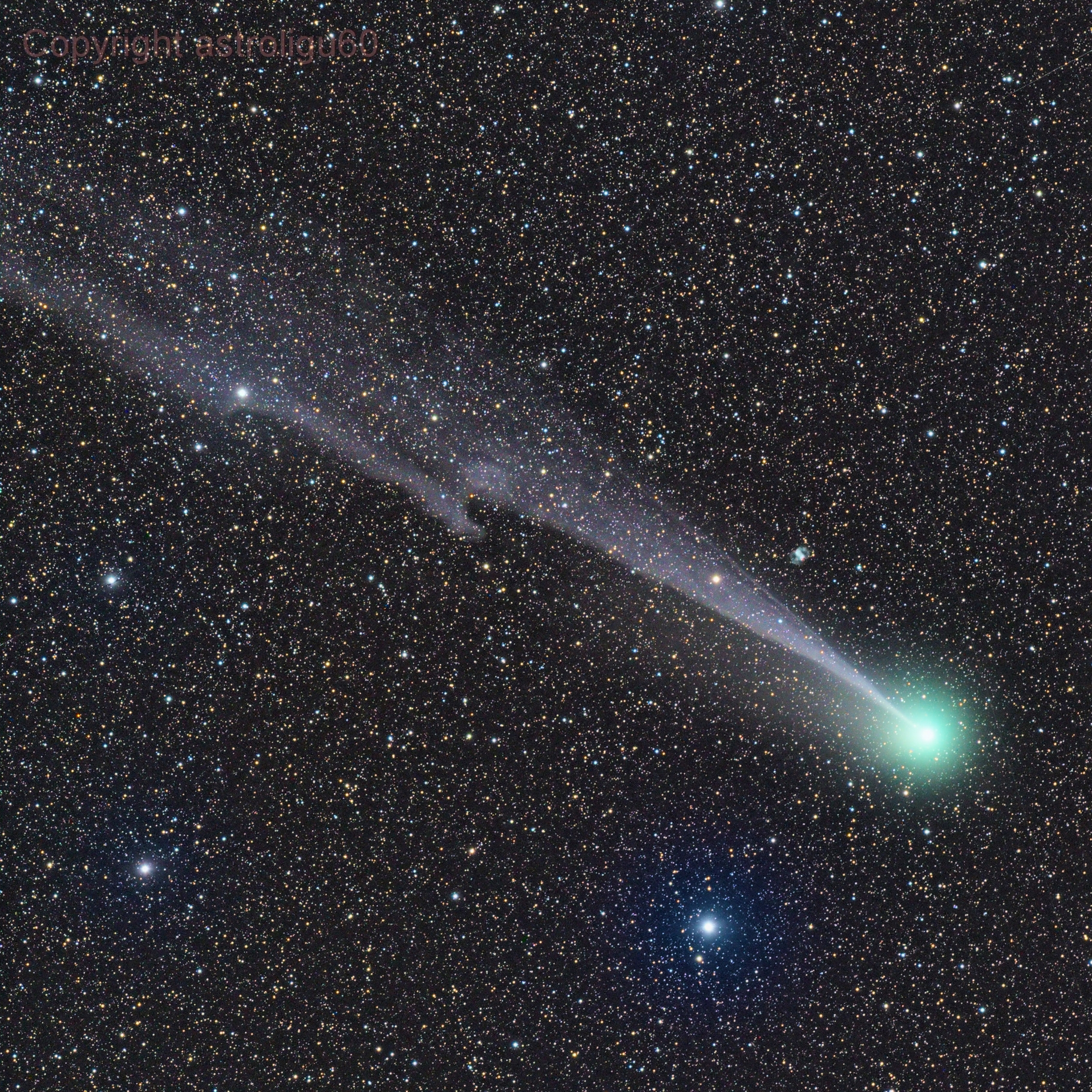
Copyright:CARA Project
原文:
Buffeted by the solar wind, Comet Lovejoy’s crooked ion tail stretches over 3 degrees across this telescopic field of view, recorded on February 20. The starry background includes awesome bluish star Phi Persei below, and pretty planetary nebula M76 just above Lovejoy’s long tail. Also known as the Little Dumbbell Nebula, after its brighter cousin M27 the Dumbbell Nebula, M76 is only a Full Moon’s width away from the comet’s greenish coma. Still shining in northern hemisphere skies, this Comet Lovejoy (C/2014 Q2) is outbound from the inner solar system some 10 light-minutes or 190 million kilometers from Earth. But the Little Dumbbell actually lies over 3 thousand light-years away. Now sweeping steadily north toward the constellation Cassiopeia Comet Lovejoy is fading more slowly than predicted and is still a good target for small telescopes.
中文翻譯:
受太陽風影響,哈洛維彌(Comet Lovejoy)曲折的離子尾在這個於2月20日拍攝的望遠鏡視野中延伸超過3度。星空背景中有迷人的藍色星星菲星(Phi Persei)在哈洛維彌下方,以及漂亮的行星狹義星雲(Planetary Nebula)M76在哈洛維彌的長尾上方。M76亦被稱為小哑鈴星雲(Little Dumbbell Nebula),距離更亮的同類星雲M27(哑鈴星雲)較近,距離哈洛維彌的綠色彗髮只有一個滿月的寬度。這顆哈洛維彌(C/2014 Q2)仍在北半球的天空中閃耀,正在離開內太陽系,距離地球約10光分鐘或1.9億公里。而小哑鈴星雲的距離則在3000光年之外。哈洛維彌正穩步北行,朝向仙后座(Cassiopeia),而且它的亮度下降比預期的慢,仍然是一個適合小型望遠鏡觀賞的好目標。
#哈洛維彌 #彗星 #小哑鈴星雲 #天文觀察 #星空 #望遠鏡 #行星狹義星雲 #天文愛好者 #漫遊宇宙 #北半球星空
來源:NASA每日圖片


